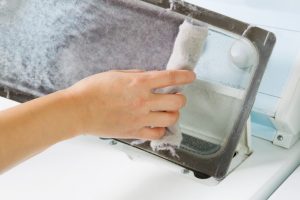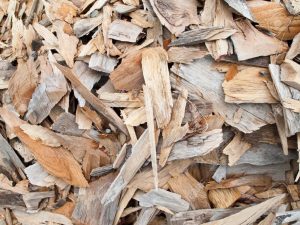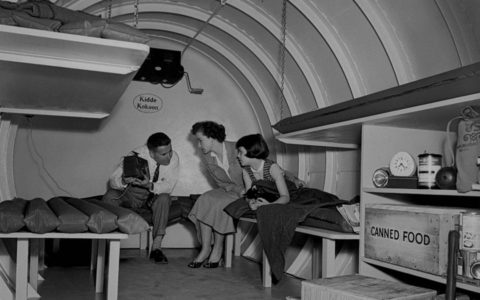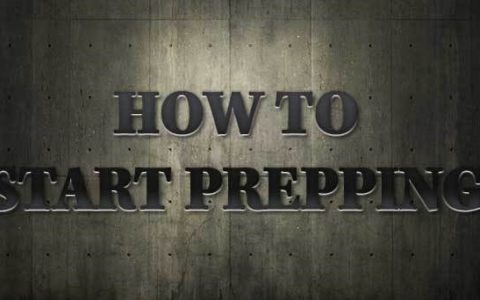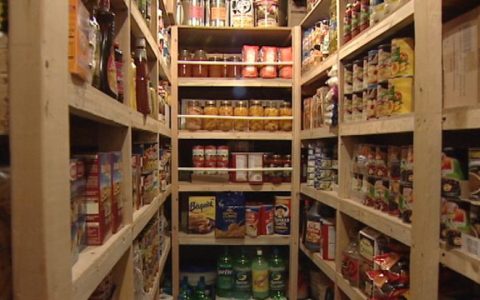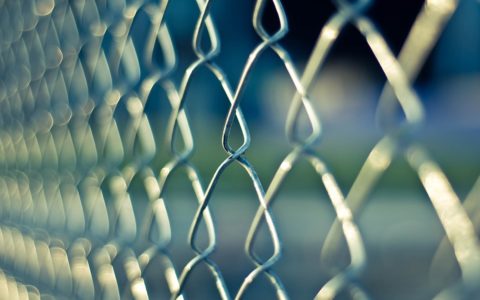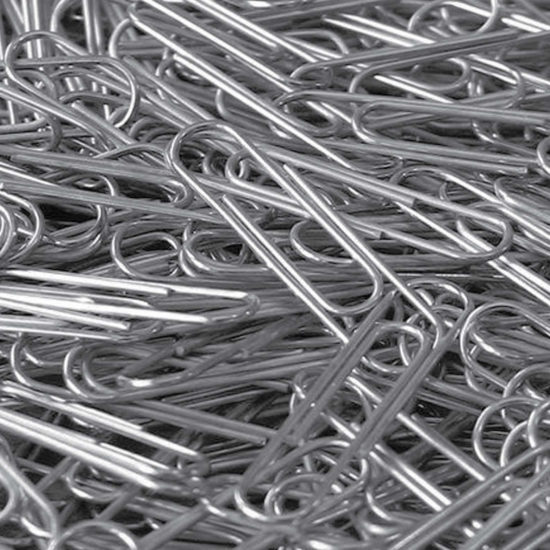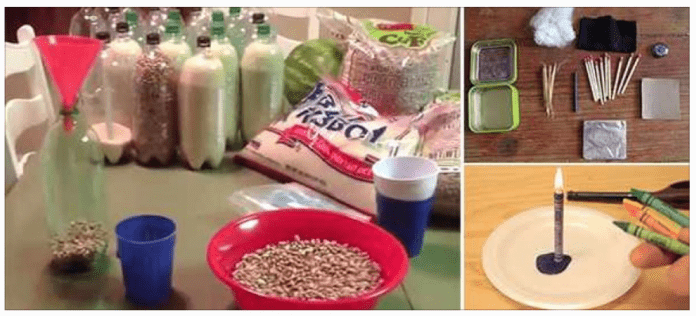
Undoubtedly, most of the developed world lives with the luxury of disposable everyday items and nearly immediate replacement from a well-planned supply chain store. But you must always consider what would happen if the supply chain for household items, hygiene products, food, water, and tools stopped being available. In order to prepare for such an event, preppers around the world save, reuse and re-purpose many items that other folks tend to toss in the trash can.
Without further explanation, here are 23 things that a prepper should never throw away.
- Dryer Lint: Dryer lint is highly flammable. Dryer lint is an easy item to collect, compresses to save on space, and will help to get a fire going for cooking and staying warm when the power is out.
- Plastic Soda & Water Bottles: Plastic bottles have many uses, but one of the main things they’ll be used for by the prepper is drinking water. Water glasses break and need replacing. Plastic bottles won’t break when you drop them; they’re lightweight and can be sealed for transport. With a drop of bleach, preppers can store fill and store an otherwise empty plastic bottle with water, every day, for long-term use while the lights are still on.
- Old Shoes & Boots: Most folks buy new shoes when their pair starts to look dingy, but they are still very functional. Clothing one’s feet is something the prepper can’t forget to plan for in SHTF. If nothing else by saving old shoes, the prepper will create a wealth of barter items to trade with people. And you can bet the value of a pair of shoes in a post-apocalyptic world is going to be fairly high. Here’s how to make your boots last longer.
- Old Clothes: Just like old shoes, we tend to give away clothing or throw it away when we have a small hole or stain on our shirt. The prepper knows that he can still use that clothing for wear in a survival situation, but he can use the fabric to mend, replace and re-purpose many household items. Many people don’t consider sources of fabric in SHTF, but old clothes are great for that.
- Wood Scraps: This goes without saying, but wood scraps should always be collected, kept organized, stacked, and dry. While it’s easy to toss scrap wood in the trash, consider the need to keep a cooking fire going if you haven’t had power for 3 weeks.
- Cord, String, and Rope Pieces: From sewing clothing to securing shelter, string, cord, and rope will be a highly-valued items that the prepper should never “toss to the curb”. It’s very easy to fold, wrap and store spare cordage, so never throw it out!
- Wire: There are two types of wire the prepper should never throw away – conductive and non-conductive wire. The conductive wire should be saved as barter pieces for barter for electrical repair or for making a tin can directional WiFi antenna to extend your communication after an EMP. The non-conductive wire should be saved for utility and fastener use. Don’t throw even a hand-length piece of wire away. Instead, organize it, and put it away in a dry spot.
- Spare nuts, bolts, and screws: In an extended grid-down situation, folks will eventually set up some form of commerce. If you’re astute, you can provide income for your family post-SHTF and repair items as needed collecting all the spare fasteners that most folks throw in the garbage.
- Used Candles: The prepper can scrape out the last little bit of wax in used candles. When enough wax is collected it can be melted and consolidated into one candle container. New wicks are fairly easy to make. When the lights go out for good, a source of light like candles will be invaluable.
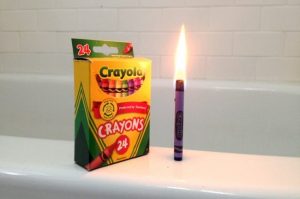
- Broken Crayons: Children are great for making broken crayons, but don’t throw the broken ones away! Instead, remove the wrappers and throw the pieces in with your saved used candle pieces, so they too can be used to make more candles.
- Broken Pencils: Broken pencils can be cut in half a long way, exposing graphite. The prepper can store them in the glove box of a car. When either end of the exposed graphite in the pencil is hooked up to a car battery and cable, it turns red hot and bursts into flames. Every prepper’s bug-out vehicle should have a bag of cut-in-half pencils. Don’t throw them out!
- Zip ties: Extra zip ties come with all sorts of products as extra fasteners. We tend to throw them out. But the prepper cannot throw them away. These are too useful. Zip ties had hundreds of uses and take up virtually no space.
- Coffee Grounds: Did you know that you can run your coffee grounds through your coffee machine twice? Some people like weak coffee, and some like a less caffeinated cup of coffee before bed. One can also use coffee grounds as compost for the garden.

- Vegetable scraps: Plant and veggie scraps can be used for compost, just like coffee grounds, but the prepper can also throw these scraps out for their chickens to eat.
- Hair Clippings: Hair clippings are another great addition to your garden compost pile. If you were thinking of throwing that pile of hair on the floor away, don’t! Your garden will love the nutrients added to the compost pile.
- Soap chips: Usually the little leftover soap bar chips go down the drain or are thrown out. But reconsider collecting and compressing them to make new soap bars. In SHTF the prepper will have to make the most of hygiene products to keep from becoming ill.
- Toilet Paper Rolls: Toilet paper rolls are another great source of tinder for starting fires. They can be cut and flattened out for easy storage. Combine cut-up toilet paper rolls with dryer lint the prepper will have a warm fire in no time. You can also make your own substitute for toilet paper.
- Broken Rubber Bands: Broken rubber bands really aren’t broken. By tying the two ends together, the rubber band works just fine again. In SHTF a broken rubber band is still an excellent temporary light-duty fastener.
- “Expired” Honey: Raw honey really doesn’t expire. Think twice before trash-canning that jar. While most commercially bought raw honey shows 2 years for expiration, the truth is, that honey can be stored almost indefinitely when housed in a cool, dry place.
- Rusted Tools: In SHTF, preppers won’t have the luxury of going to the hardware store. If tools become rusted or dingy looking, clean them up with oil and store them in the garage. Another man’s dingy, rusted tools are another man’s lifesaver in SHTF. Old tools are an excellent barter item.
- Metal Breath Mint Containers: These types of containers are great for condensing the last portion of chapstick, balm, and salve. The containers usually fit well right inside a shirt pocket. Breath mint containers also work well for survival kits.
- Plastic Milk Jugs: Cut the top off the plastic milk jug and you have an excellent pot for small plants. This is a great way to start your garden and move the sprouted plants to a fixed location when you’re ready.
- Paper clips: I cannot count the times paper clips are thrown into the trash at an office or put through the shredder, but the prepper wouldn’t do that. Paper clips are essentially robust twist-ties ready to help the prepper fasten shelters and projects in a post-SHTF world. They can be used as shims for repair mechanics as well.
Hopefully, this list has inspired you as a prepper to think of items you can also reuse instead of throwing away.
The vital self-sufficiency lessons our great grand-fathers left us
Knowledge to survive any medical crisis situation
The Smart, Easy Way to Food Independence
Your secret weapon when our society shatters into a million pieces
Secure your privacy in just 10 simple steps


